Arthrosis is a chronic joint disease in which the cartilage of the joint is gradually destroyed.When the cartilage is destroyed, there are changes in the bone that is covered by the cartilage and in the joint capsule.However, this description is not entirely accurate as there are some inflammatory changes in arthrosis.In countries in English, the vast majority of cases are "arthrosis" of arthritis (arthrithis), ie inflammatory joint disease (ITIS suffix), while generally called arthritis, rheumatic diseases, infectious, but rare.
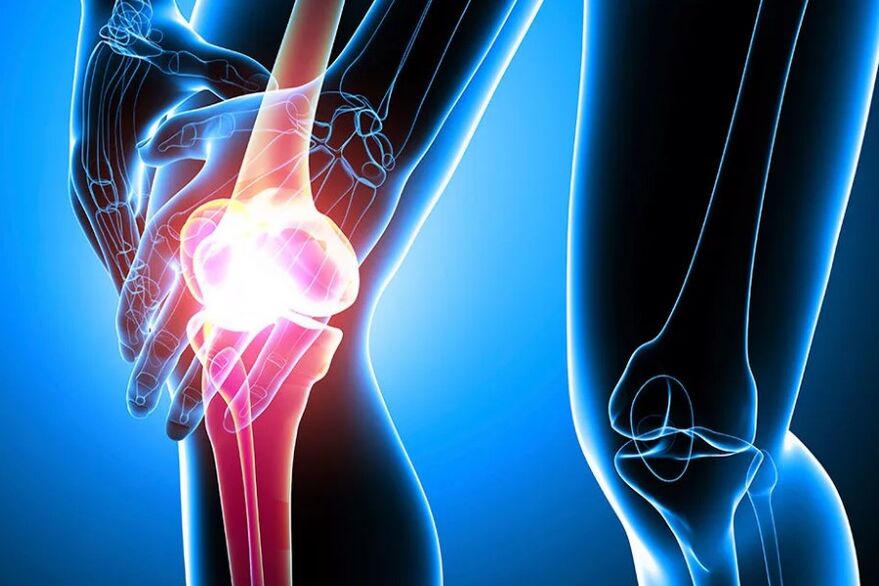
In modern scientific articles, the term osteoarthrosis is more often found ("osteo" - bone, "arthros" - joint, ie an anti -inflammatory disease of the joint and bones).And again in the English -language countries, the osteoarthritis of osteoarthritis, that is, the inflammatory disease of the joint and bone.In fact, arthrosis and arthritis are synonymous, and his doctors talked about the same.
As already noted at first, in the case of arthrosis (osteoarthrosis), the cartilage is gradually destroyed and the bones are gradually involved in the process.In the case of bone arthrosis, the sclerosis (compression) is first found, as a result of the loss of shock -abrasion properties.Then there are points that are along the edge of the bone (exostosis) that are often called mistakenly "
A betegektől gyakran halljuk a kérdést: "Eleinte az arthrosist diagnosztizálták nekem, és most az osteoarthritis már ír. Tényleg olyan rossz?" Valójában az arthrosis és az ízületi gyulladás szinonimák, és az orvosai ugyanazról beszéltek.
Mint már a kezdetben már megjegyeztük, az arthrosis (osteoarthrosis) esetén a porc fokozatosan megsemmisül, és a csontok fokozatosan részt vesznek a folyamatban. A csontban lévő arthrosis esetén először a szklerózis (tömörítés) szakasza fordul elő, a sokk -abszorpciós tulajdonságok elvesztése eredményeként. Aztán vannak olyan pontok, amelyek a csont széle mentén vannak (exostózis), amelyeket gyakran tévesen hívnak "Salts inserts " - In fact, the normal joint joint, no salt salt. During the disease, the bone is bent, deformed, cysts are formed: often calls the disease deformation of arthrosis (osteoarthrosis).Its causes have been considered unknown for a long time, so there is another name for this disease - an idiopathic arthritis, that is, for unknown reasons or spontaneous reasons, scientists no longer take into account the joint mystery.It affects the maximum load (hip, knee, ankle joint, hand joints).Arthrosis affects both knee joints, while one of the joints is more destroyed.Both are knees and different).
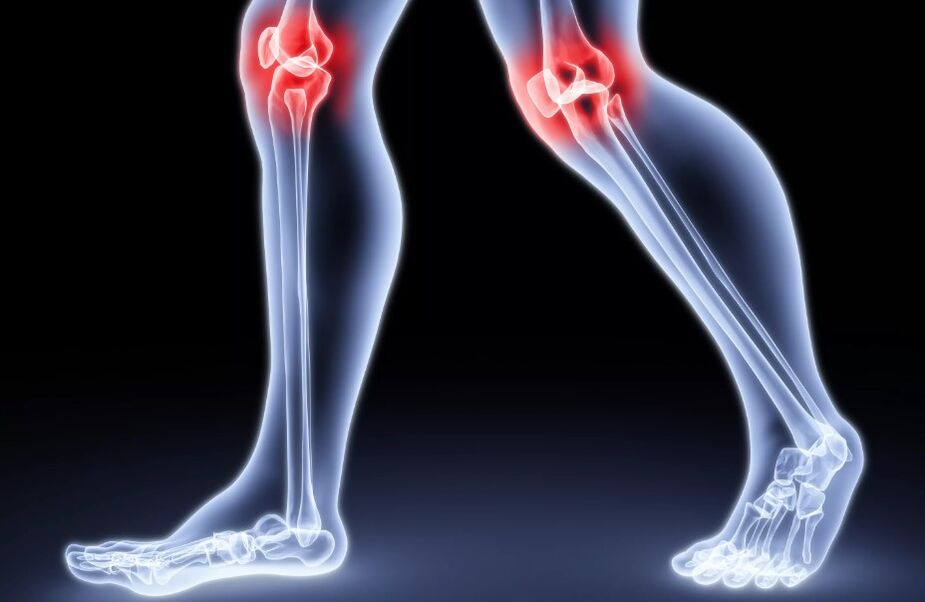
Az arthrosis kialakulásának pontos okait hosszú ideig ismeretlennek tekintették, tehát van egy másik név ennek a betegségnek - Idiopátiás ízületi, azaz arthrosis, amely ismeretlen okokból vagy spontán okból merült fel. Természetesen a tudósok már nem veszik figyelembe az ízületi rejtélyt, és fejlődésének okai ismertek. További információ az arthrosis okairól, arról, hogy mi az elsődleges és a másodlagos artrózis.
Az arthrosis gyakrabban érinti azokat az ízületeket, amelyek maximális terhelést tapasztalnak (csípő, térd, bokaízület, a kéz ízületei). A csípőízület arthrosisát coxarthrosisnak nevezzük (a "coxa" szóból - csípő), a boka ízületének - crurosteoarthritis ("cruuris" - alsó láb), térd - Gonarthrózis ("Gene" - térd). A legtöbb esetben az arthrosis mindkét térdízületet érinti, míg az egyik ízület jobban megsemmisíthető. Ebben az esetben a diagnózis kétoldalú gonarthrosisnak hangzik, amelynek domináns károsodása a jobb (vagy bal) térdízületnek.
Gyakran nem egy, hanem több ízületet érint az arthrosis, tehát egy másik kifejezést használnak - PolioszteoartrózisAmi azt jelenti, hogy három vagy több ízület veresége (például két szimmetrikus, mindkettő térd, és más). Ebben az esetben a diagnózis általában az alábbiak szerint hangzik: polioszteoarthrosis a térdízületek (vagy egyikük) domináns károsodásával.
Why the knee joint is joint joint?
The knee joint is joint joint.Depending on the causes of the occurrence, primary and secondary arthrosis can be distinguished.With age, the update of the cartilage slows down, and the destruction of the cartilage, which is called the process of degradation or degeneration, begins to reign.When degeneration begins to reign, the knee joint arthrosis begins
in most cases, the degeneration of the cartilage, ie the development of arthrosis, occurs after 45-50 years, but sometimes the arthrosis can occur in 20 years.Fortunately, the development of arthrosis at such a young age is extremely rare.As a general rule, if arthrosis occurs, only at the age of 40-60, and if there is no arthrosis at the age of 60, it will probably no longer or rather become insignificant (certain degenerative changes in the knee joint are found in all elderly people, but they are exerted differently).90%will be joint signs, but not all of their knees feel problematic.This is especially true for men who are often "severe" arthrosis do not show themselves or cause minimal discomfort.
A porc szintézisének és megsemmisítésének folyamata általában kiegyensúlyozott. Ha a degeneráció elkezdi uralkodni, akkor a térdízület arthrosis megkezdődik
A legtöbb esetben a porc degenerációja, azaz az arthrosis kialakulása 45-50 év után következik be, de néha az arthrosis 20 év alatt alakulhat ki. Szerencsére az arthrosis kialakulása ilyen fiatal korban rendkívül ritka.
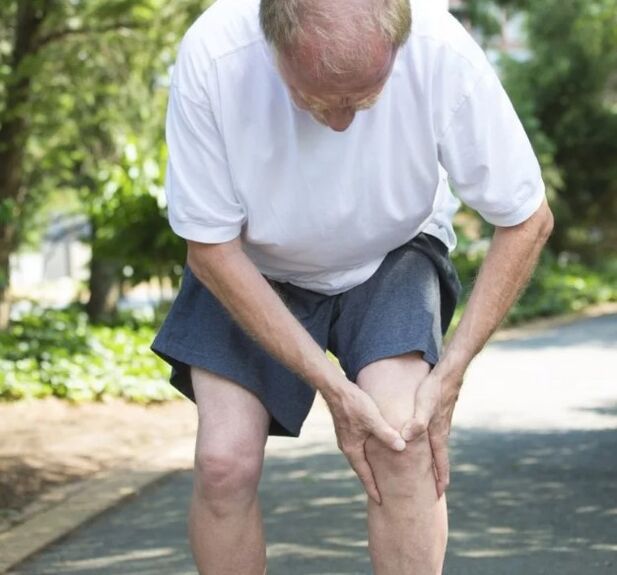
Az emberek nagyobb vagy kisebb mértékben hajlamosak a térdízület artrózisára. Általános szabály, hogy ha az arthrosis bekövetkezik, akkor csak 40-60 éves korban, és ha 60 éves koráig nincs arthrosis, akkor valószínűleg már nem lesz, vagy inkább az arthrosis jelentéktelen lesz (a térdízület bizonyos degeneratív változásai minden idős emberben megtalálhatók, ám ezek eltérően fejeződnek ki).
Fontos megjegyezni, hogy ha röntgenfelvételeket készít és készít minden idősebb ember számára, például 60 éves, akkor csaknem 90%lesz az ízületi jelek, de nem mindegyik térdét problémásnak érzi. Ez különösen igaz azokra a férfiakra, akik gyakran már „súlyos” arthrosis nem mutatnak önmagukat, vagy minimális kellemetlenségeket okoznak.
Primary arthrosis occurs spontaneously, that is, starting factors, so it is called idiopathic, which we have previously talked about.
So we have already realized that age is one of the main factors that determine the formation of arthrosis, as the process of cartilage degeneration begins with age.A fourth person under the age of 55 suffers from arthrosis of the knee joints.But we also noted that with age, arthrosis does not develop in everyone.So there are other reasons.Before we list them, we note that there is no main reason.The arthrosis of the knee joint develops in terms of causes, while some play a major role, while others - less.
Floor. More often, women of the knee joint suffer from women.The exact reasons for this are unknown, but you can try to explain the following reasons.On average, women have a higher life expectancy than men, and accordingly the average elderly woman expresses degenerative processes.In addition, women's body weight is slightly higher.The size of the bones in women is smaller than in men and leads to higher pressure in the knee joint in parallel to the higher body weight and, accordingly, more intensely more mechanical destruction of the cartilage.In the vast majority of women's cases, arthrosis begins after menstruation has stopped, and the lack of estrogens is likely to determine the development of arthrosis.Note that attempts to treat arthrosis of the knee joint are naturally done after menopause after menopause, but they have failed so far.
Weight. Of course, the higher the weight of the body, the greater the load on our knee joints.In addition, overweight reduces physical activity and leads to weakness in the hip muscles.The more active synthesis of the cartilage requires movement (without excessive pressure), and with a sedentary lifestyle, the cartridge cartridge process begins to reign.Hip muscles are important stabilizers of the knee joint, and with the weakness of these muscles, the movement of the knee joint is more painted, which accelerates the destruction of the cartilage.In general, these processes can be described as a vicious circle: the higher the body weight, the faster the knee joint is destroyed, the greater the pain, the harder it is to move, which again leads to excess weight.This is again because arthrosis has no reason.
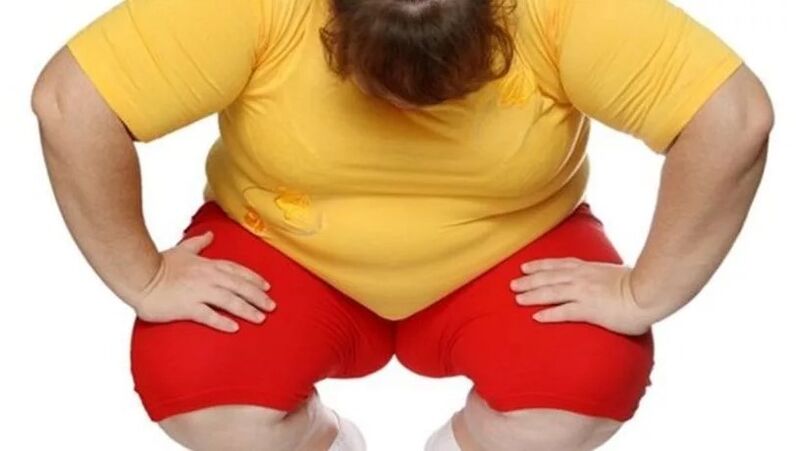
Inheritance.It has long been noticed that arthrosis of the knee joints is a "family" disease.If you have arthrosis or your parents, unfortunately, the probability of this disease is high.Scientists have discovered a number of gene functions that are responsible for, for example, the main characteristics of the main cartridge of the cartilage - the unique properties of the collagen structure, but unfortunately so far these discoveries have no practical significance as we cannot affect joint prevention or treatment.There are evidence that the inheritance of arthrosis is distributed along the female line, which partially explains the great willingness of these disease.
The primary arthrosis of the knee joint is not only for one reason, but only in its entirety.At the same time, the arthrosis of the knee joint arthrosis is very different for almost every person over 60 years of age, but does not always appear on radiography.In fact, this is even more difficult: the knee joint is not pain in an elderly person, and even at the age of 40-60 does not accompany changes in X-rays of arthrosis.
Átöröklés. Régóta észrevették, hogy a térdízületek artrózisának "családi" betegség. Ha arthrosis vagy a szülei vannak, akkor sajnos ennek a betegségnek a valószínűsége magas. A tudósok számos olyan génfunkciót fedeztek fel, amelyek felelősek például a porc fő patronjának - a kollagén szerkezetének egyedi tulajdonságaiért, de sajnos eddig ezeknek a felfedezéseknek eddig nincs gyakorlati jelentősége, mivel nem befolyásolhatjuk az ízületi megelőzést vagy kezelést. Bizonyítékok vannak arra, hogy az arthrosis öröklését a női vonal mentén terjesztik, ami részben magyarázza ezeknek a betegségnek a nagy hajlandóságát.
A térdízület primer artrózisának nem csak egy okból, hanem csak a teljes egészében történik. Ugyanakkor a térdízület artrózisának szinte minden 60 évesnél idősebb embernél egy vagy másik fok, de az arthrosis súlyossága nagyon különbözik, és nem mindig a radiográfián található arthrosis megmutatkozik. Valójában ez még nehezebb: a térdízületnek egy idős embernél nem fájdalmat, sőt, 40-60 éves korban nem kíséri az arthrosis röntgenfelvételének változásait.
For example, scientists found that 76% of the elderly found arthrosis with the knee of X -ray. That is, in the elderly person, the pain in the knee joint is not necessarily the arthrosis of the knee joint. That is, arthrosis does not always hurt.Sometimes changes in X -rays are completely insignificant and pain is severe and vice versa: the joint is completely destroyed on the X -ray and a person can cycle, can be involved in yoga, works as a malarus, and such cases are found almost every day.Joint arthrosis affects.The blue arrow marked the outer section of the joint, the orange - the interior of the joint.Be careful that the difference between the bones is already inside: the cartilage is not visible on the X -ray and this gap represents the cartilage.In this case, there is virtually no cartilage inside the knee joint, and the bone is already rubbing the bone.
Szigorúan véve, a fájdalom súlyosságával nincs kötelező kapcsolat a térdízület arthrosis súlyosságával a röntgenfelvételen. Előfordul, hogy a röntgenfelvételek változásai teljesen jelentéktelenek, és a fájdalom erős, és fordítva történik: az ízület teljesen megsemmisül a röntgenfelvételen, és egy személy kerékpározhat, jógában részt vehet, malarusként dolgozik, és az ilyen eseteket szinte minden nap találkozunk.
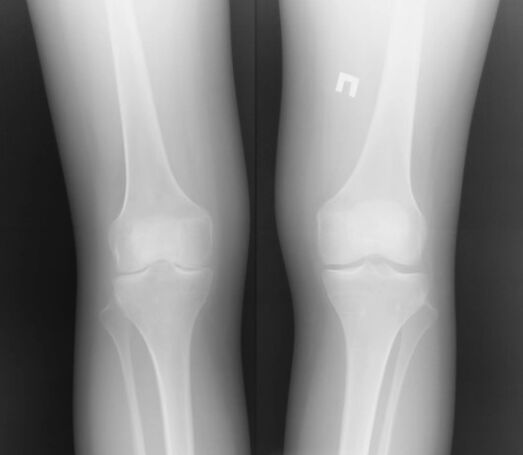
Gyakrabban a térdízület arthrosis a belső (medialis) osztálytal kezdődik.
A térdízület röntgenfelvétele, amelyet az ízületi arthrosis befolyásol. A kék nyíl az ízület külső szakaszát jelölte, a narancssárga - az ízület belsejét. Vigyázzon arra, hogy a csontok közötti különbség már belülről van szó: a porc nem látható a röntgenfelvételen, és ez a rés jelenti a porcot. Ebben az esetben a térdízület belsejében gyakorlatilag nincs porc, és a csont már dörzsöli a csontot.
With gradual wear of the cartilage, the foot bows from the inside of the knee joint.Since arthrosis often affects both knee joints, that is, both sided, both legs start twisted and O-shaped leg deformation occurs (variation deformation).(X-shaped) deformation variants increases even more and arthrosis develops faster and irrevocably.This option is called patell-phomoral arthrosis, and this usually occurs as follows
tilt, a sample subluxation, lateral hyperpression syndrome
to which a separate article is dedicated to our website
, which you can read in a separate article.We are now briefly talking about the possibilities of secondary arthrosis. Knee joint injuries, of course, does not add health, and almost all of them, or increases the risk of arthrosis.Unfortunately, the incomplete of meniscus has ever been likely to ever develop the joint.If a medial (inner) meniscus is damaged, arthrosis is more likely to develop inside the knee joint.And accordingly, when the external meniscus explodes, arthrosis develops in the outer joint of the joint.Note that the crack of the meniscus does not necessarily lead to arthrosis, the likelihood of development.Of course, the more the meniscus damaged, the greater the joint risk.amelyre külön cikket szentelnek weboldalunkon vagy utána A patella törései , amelyről külön cikkben is olvashat.
A térdízület másodlagos artrózisának
A térdízület arthrosisának bármilyen konkrét oka miatt is kialakulhat, ebben az esetben az arthrosist másodlagosnak nevezik. Most röviden beszélünk a másodlagos arthrosis lehetőségeiről.
A térdízület -traumás artrózis utáni. A térdízület sérülései természetesen nem adják hozzá az egészséget, és szinte mindegyiket, vagy úgy, növelik az arthrosis kockázatát.
A térdízület egyik leggyakoribb sérülése a menisci törése, amelyet a weboldalunkon külön cikknek szentelnek. Sajnos a meniszkusz hiányosának valaha is volt valószínűsége, hogy valaha is kialakuljon az ízületi. Ha egy mediális (belső) meniszkusz sérült, akkor az arthrosis inkább a térdízület belsejében alakul ki. És ennek megfelelően, ha a külső meniszkusz robbant, akkor az ízület külső ízületében az arthrosis alakul ki. Vegye figyelembe, hogy a meniszkusz repedése nem feltétlenül vezet arthrosishoz, a fejlődés valószínűségéhez. Természetesen, minél inkább a meniszkusz sérült, annál nagyobb az ízületi kockázat.
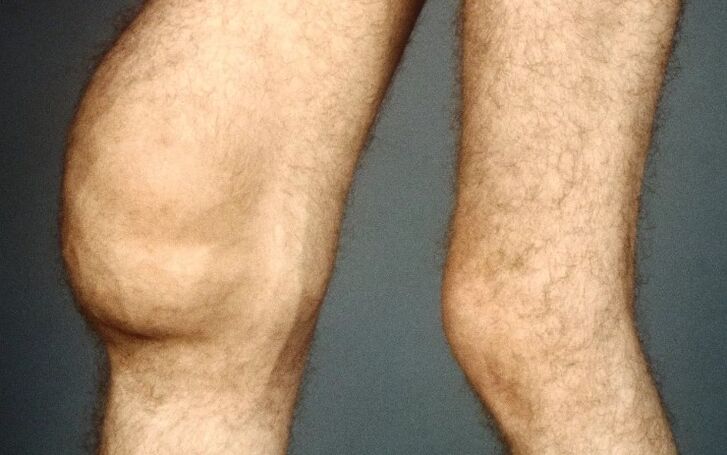
Another reason for the development of the knee joint arthrosis is the fracture of the ligaments, such as the break of the first crusade.As a result of the interruption of the league, instability may occur, which of course leads to cartilage damage and the formation of arthrosis.Of course, cartilage damage depends on the degree of instability, which may be different.Almost any intraarticular fracture is the displacement of fragments and thus changes in the joint surface.The step as a result of shifts will inevitably lead to gradual destruction of the cartilage and joint appearance.Of course, the harder the fracture, the greater the intraarticular fracture of the fragments, the greater the cartilage and the higher the risk of arthrosis.After heavy, multi -prolonged fractures of tibial condyles, arthrosis develops in almost 100% of cases, even though perfectly performed osteosynthesis surgery (removal of bone fragments and screws, plates, etc.

















































